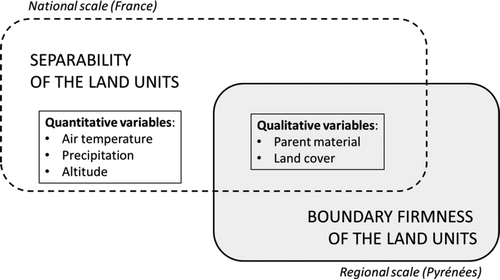Figures & data
Figure 1. (a) MODIS-based LUs obtained by segmenting three EVI and three second moment images (scale parameter of 15 (Bisquert, Bégué, and Deshayes Citation2015), superimposed to a color composition of MODIS EVI of April (R), July (G), and December (B) averaged over 2007–2011. (b) Distribution of the LUs areas. For full color versions of the figures in this paper, please see the online version.
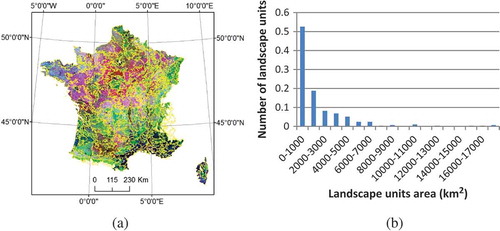
Figure 2. Environmental variables used in the explanatory analysis of the stratification: (a) average maximum temperature (Météo France; 2007–2011); (b) average minimum temperature (Météo France; 2007–2011); (c) normal annual cumulated precipitations (Joly et al. Citation2010); (d) elevation (GTOPO 30); (e) parent material (Van Liedekerke, Jones, and Panagos Citation2006). Only the nine dominant parent materials of the STU are represented for the sake of clarity; (f) CORINE land cover 2006 (European Environment Agency Citation2007). Only the five main (level 1) categories are shown for the sake of clarity. The LUs map obtained in Bisquert, Bégué, and Deshayes (Citation2015) is superposed in all cases. For full color versions of the figures in this paper, please see the online version.
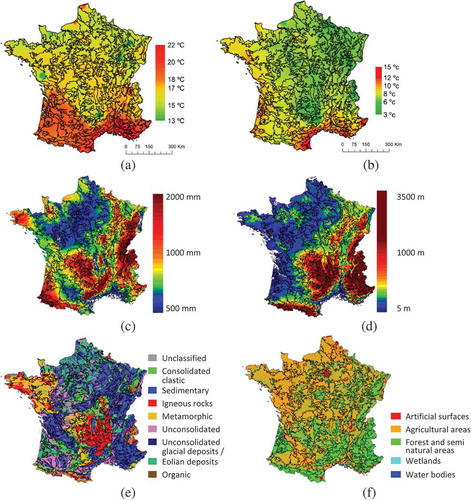
Figure 3. Pyrenean land cover map (adapted from http://www.cesbio.ups-tlse.fr/newsletter_cesbio/numero8/Vmail.html#sudouest1, accessed 10/06/2013). The fraction of the class presence is given in parenthesis. The black line corresponds to the France–Spain border. For full color versions of the figures in this paper, please see the online version.
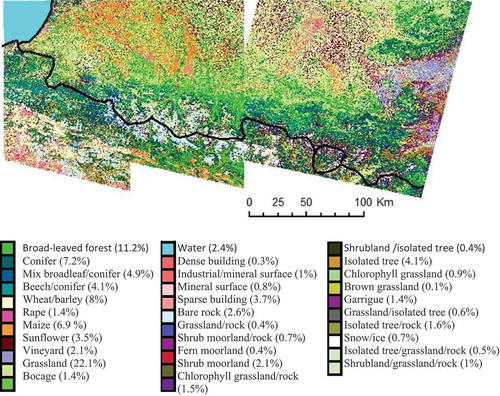
Figure 5. Simplified Pyrenean land cover map (see ), overlaid with the stratification results obtained by Bisquert, Bégué, and Deshayes (Citation2015), and divided in three zones (land 1: red; land 2: blue; land 3: pink) that correspond to different Landsat image acquisition dates. For full color versions of the figures in this paper, please see the online version.
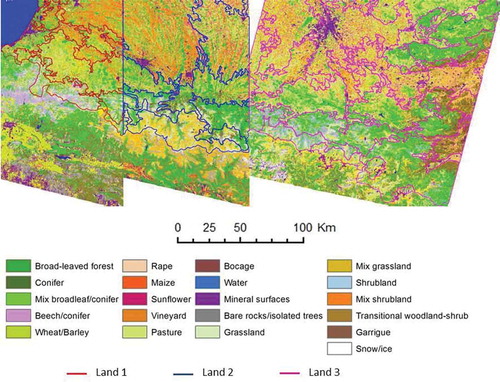
Figure 6. Example of test areas (black lines) along the boundaries (blue line) between neighboring LUs used for analyzing the boundaries quality. The legend is the same as in . For full color versions of the figures in this paper, please see the online version.

Table 1. Moran’s index calculated on the environmental quantitative variables, at national scale.
Table 2. Land cover classes correspondence between the Pyrenean cover map () and the simplified Pyrenean cover map ().

